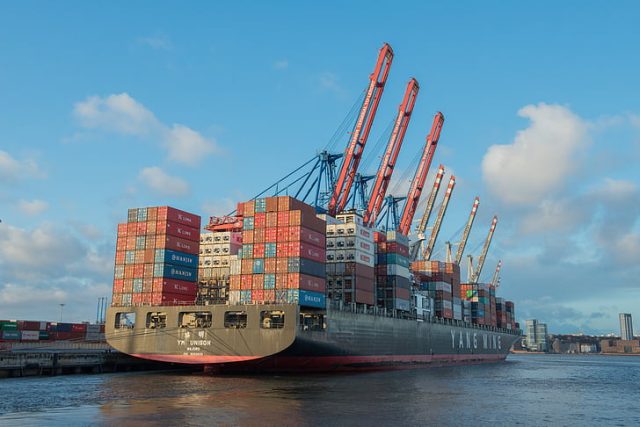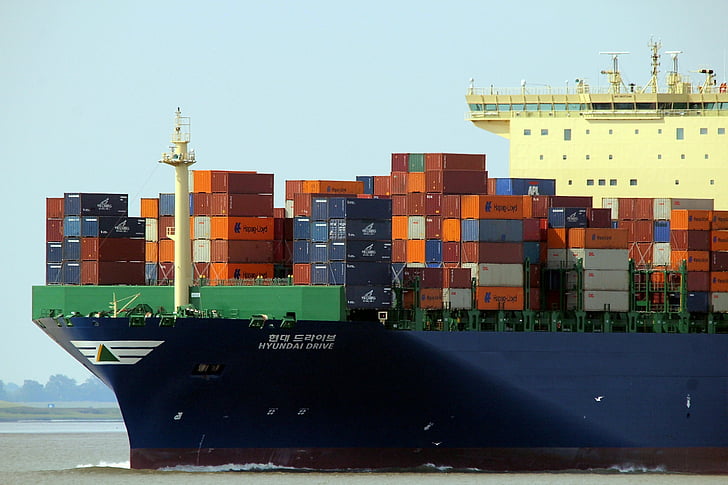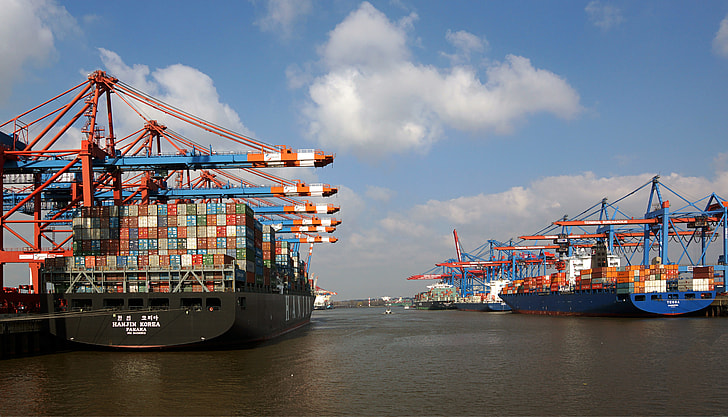
The “Black Sea grain initiative” is an agreement signed in Istanbul on the 27th of July 2022 between Ukraine, Russia, Turkey and the United Nations (UN). The agreement stipulates that Russia will not attack Ukrainian civilian ships carrying grain on the Black Sea- Bosphorus Strait route, the main argument being the need for these exports to countries in the Middle East where the transport of grain (especially wheat) is crucial for the development and even survival of the population. In peacetime, before the March 2022 invasion, Ukraine together with Russia covered 27% of the world’s wheat needs and 75% of its sunflower oil needs.
The agreement between Ukraine and Russia on grain exports to the Black Sea was extended by 120 days in November, with a deadline for the 18th of March 2023. This is despite the fact that Russia initially opposed it because of an alleged attack by Ukraine on a fleet of Russian ships in the Sevastopol area. The reconsideration of the initial decision was made after lengthy negotiations with Turkey, the state that controls the Bosphorus Strait. On the 18th of March, Russia agreed to extend the agreement for another 30 days.
In order to understand why these negotiations on the grain agreement required negotiations with Turkey, it should be recalled that, according to the Montreux Convention of the 22nd of June- 22nd of July 1936 on the straits’ village, the Turkish state obtained control over the Bosphorus and Dardanelles straits. The most important aspect of the convention held in Switzerland gave Turkey the right to militarise the straits area in case of armed conflict. As the situation is now in the context of the armed conflict in Ukraine, Turkey can decide, one could say unilaterally, which ships can pass through the two straits it controls.

But Russia is making its acceptance conditional on its own agreement with the UN to allow it to export its own grain and fertilisers, blaming Russia’s export blockades for the current world food crisis. According to Reuters, as of the 19th of April, one day after the 30-day deadline, it is not yet known whether Russia will still be in favour of extending the agreement with Ukraine. However, Ukrainian vessels have been accepted in ports and continue their transit.
On his twitter account, Ukrainian Deputy Prime Minister Oleksandr Kubrakov, announced that “ship inspections are being resumed, despite the RF’s (Russian Federation) attempts to disrupt the agreement” and assured that together with Turkey and the UN he is trying to find solutions for the continuation of the Black Sea grain transport initiative. Oleksandr Kubrakov also thanked Turkish Defence Minister Akar Hulusi for his support to Ukraine in the negotiations to extend the agreement with the aggressor state Russia.
According to UN data, from the first signing of the “Black Sea grain initiative” agreement (the 27th of July 2022) until April 2023, a total of 28,387,131 tons of grain have been delivered from the three Ukrainian ports (Odessa, Chornomorsk, Pivdennyi/Yuzhny respectively), of which 51% corn, 27% wheat, 5% sunflower, 5% sunflower meal and 12% other grains.
Where does grain from Ukraine go?
But where does this grain go? This is a legitimate question as tens of thousands of farmers across the European Union have staged protests, unhappy that Ukrainian grain has invaded the markets of EU countries.
According to UN data, the biggest recipient of grain exported through the Black Sea is China, followed by Spain, Turkey and Italy. Thus, almost half of Ukraine’s grain exported to the EU ended up feeding the future Serrano ham and Spanish chorizo. Indeed, it is also exported to underdeveloped countries, but in much smaller quantities per country compared to developed countries.
In mid-March, a BBC report showed that a total of 47% of Ukrainian grain goes to developed European countries such as Spain, Italy and the Netherlands, 26% to upper-middle class countries such as Turkey and China and only 27% to underdeveloped countries such as Sudan, Egypt and Kenya. All the while, the European Union’s domestic farmers are losing tens of billions of euros, the main beneficiaries being trading companies, the vast majority of which are US companies.
Countries such as Spain have been known for their cereal deficit since the 1980s, leading them to turn to external sources of grain to cover up to almost half of the country’s needs for human consumption and animal feed production.
Eastern European countries ignore European Commission decisions and block transit of Ukrainian grain
On the 15th of April Poland and Hungary banned grain imports from Ukraine to protect local farmers, according to Reuters. Ukraine’s response to Poland’s decision was that “resolving various issues by unilateral drastic actions will not accelerate a positive resolution of the situation”. The Ukrainian agriculture and food minister said that Poland’s decision is in contradiction with the bilateral export agreement between the two countries and also that “we understand that Polish farmers are in a difficult situation, but we emphasize that Ukrainian farmers are in the most difficult situation right now,” calling for the issue to be discussed with the competent Polish authorities.
What the Ukrainian Minister of Agriculture and Food forgot to specify is that the EU, in order to help the Russian-aggressed state, accepted on EU territory grain for which no customs duties were paid. Thus, Ukrainian cereals end up on the European market at a production cost far below the cost of an EU member farmer, which is detrimental to EU citizens.
Jaroslaw Kaczynski, leader of Poland’s ruling PiS party, said that “today, the government has decided on a regulation that prohibits the entry, import of grain into Poland, but also dozens of other types of food (from Ukraine)”. However, “we are and remain unchanged friends and allies of Ukraine. We will support her and we support her. … But it is the duty of every state, every authority, good authority in any case, to protect the interests of its citizens,” the PiS leader added.
By the 19th of April, Slovakia and Bulgaria (from the 24th of April) had also joined the ban on Ukrainian grain imports. So far, Romania is the only country around Ukraine that still accepts the import and transit of grain and oilseed products. Romanian Agriculture Minister Petre Daea announced that he will meet with his Ukrainian counterpart to discuss solutions regarding the transit of Ukrainian agricultural products through the country, and said that customs controls on these goods will be intensified. Among the measures taken by the Romanian state was the sealing and monitoring of the route of Ukrainian trucks transiting Romania.

After Russia’s invasion of Ukraine and the occupation of Black Sea ports, a significant amount of Ukrainian grain has been “stuck” in central European countries. Thanks to Ukraine’s duty-free status, the cost price of Ukrainian grain is significantly lower than grain produced in EU countries, a price that European farmers will never be able to obtain. There is also the question of the quality of products imported from a country like Ukraine, where strict rules on the use of pesticides and fertilisers imposed by the EU on agricultural producers in the European community are not respected. The quality of grain will have a considerable effect on human and animal health, as well as on animal products from animals fed grain of questionable quality.
The European Union offers various support grants to European farmers. However, as they are unable to sell their grain due to competition from duty-free Ukrainian grain exports, this aid will most likely come too late when many European farmers will have already gone bankrupt.
In conclusion, what is the concrete purpose of facilitating the transport of agricultural products from Ukraine? Why does the European Commission, under the pretext of helping Ukrainian farmers, facilitate the enrichment of big trading companies? Does the world really depend so much on Ukrainian grain that it costs so much for farmers in Europe? In the current context, when we consider reducing energy waste, should we also consider reducing food waste?



 Subscribe
Subscribe